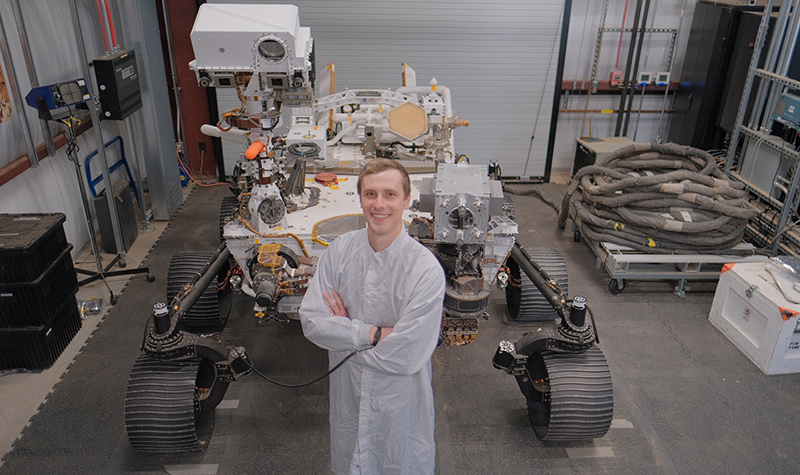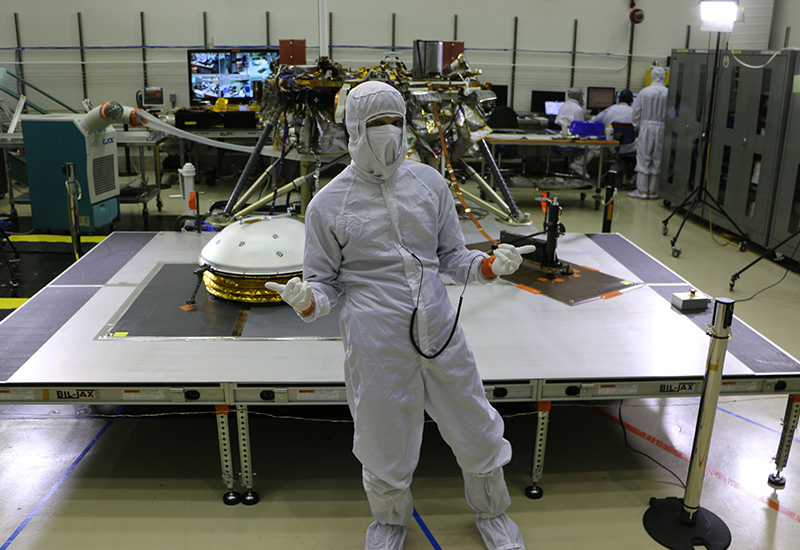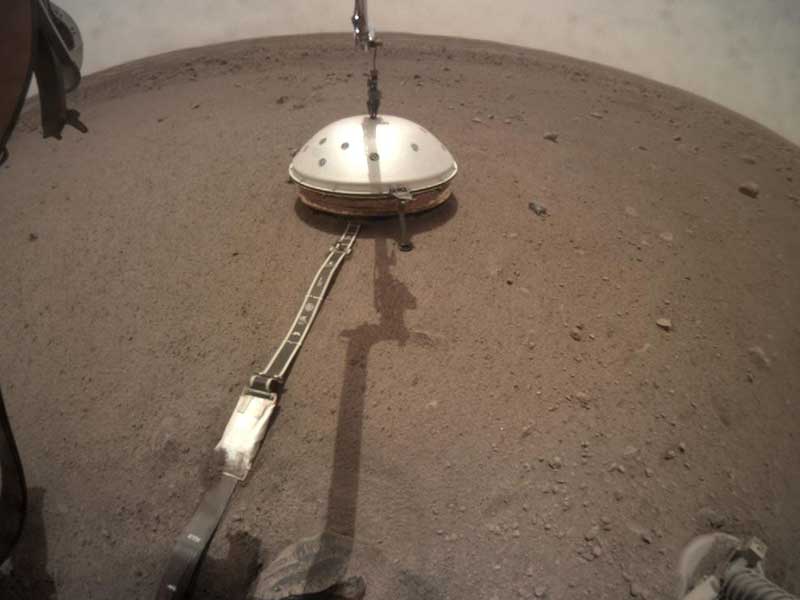
Steven “ Steve” Coffed
Mechatronics Engineer, Psyche ATLO Team - NASA’s Jet Propulsion Laboratory (JPL)
High School: St. Joseph's Collegiate Institute in Buffalo, New York
University of Buffalo
B.S. Degrees in Mechanical and Aerospace Engineering
Students for the Exploration and Development of Space (SEDS)
Growing up, I spent a lot of time outdoors with my family. We camped and traveled around New York state. I remember from a young age looking up, and seeing all those stars in the sky. It certainly was inspiring. As I was hiking around the trails, I had a sense of exploration, and it just naturally extended to the stars.
Sprinkle in a love for sci-fi, as well. I remember watching “2001, A Space Odyssey.” That was such a great film. Then we had “Star Wars” and “Star Trek.” I watched those and got caught up in the exploration – traveling to the outer edges of space, the next frontier.
I had the opportunity to work for JPL and NASA, and I am amazed at how lucky I am to be part of projects that also push the boundaries of what’s possible.
When I got to college, I didn't immediately know what kind of engineering I wanted to study. My father worked in biomedical engineering. I saw what he did, and that seemed exciting, and it married my own interest in science and math.
What really hooked me into aerospace was a club I discovered on campus – Students for the Exploration and Development of Space. They were working on weather balloons and satellites that were putting cameras into space. You could see the curvature of Earth.
I think a lot of people feel working in space is something that's unattainable, distant, or difficult. I had similar preconceived notions, but once I actually got involved in some of the projects, it was not only accessible but really exciting and engaging.

Since I started at JPL, I've worked on three main projects. I worked on the Mars InSight lander for about two years. From there, I went to Mars Perseverance rover for two years. Now I’m working on the Psyche mission.
My specialty is Assembly, Test, Launch, and Operation, or ATLO. My favorite part of working on the ATLO team is that we are responsible for the entire spacecraft. When a spacecraft is designed at JPL, it goes through an early project formulation phase – blue sky. Then it goes into a design process and those designs are reviewed and approved. Those subsystems get assembled and integrated.
The ATLO team receives all of those different pieces of hardware and assembles the spacecraft. Then we conduct tests. While the ATLO team performs a wide array of tests, the big ones for the mechanical team are usually dynamics testing where we shake the spacecraft on a shaker table like it's on a rocket, and thermal vacuum testing to simulate the environment of space. If there are robotic arms involved or any specific mechanisms, we do functional testing.
Eventually, we install the spacecraft onto the rocket for launch. Once the rocket launches and the spacecraft is in orbit, the ATLO team sends commands to the spacecraft, and receives information back as the spacecraft heads toward its destination and begins collecting data.
I've usually been in the phase between receiving hardware and assembling/testing it, and then delivering it to the launch site. I did that work for InSight. I worked on the seismometer and the robotic arm, and took those to our partner Lockheed Martin to integrate them onto the lander.
For Perseverance, I worked with the sample caching subsystem. We tested the robotic arm that does the drilling, coring, and sample collection.
For Psyche, I’m also on the ATLO team that is installing the hardware on the rocket. There’s a magnetometer, and a gamma ray and neutron spectrometer. There also is a multispectral imager – a camera – and an x-band radio telecommunications system.
The biggest piece of advice I would give is to get involved with a project early on. If you're in high school, they have robotics programs that students can join.
If you're in college, look on campus to see if there are any activities like the high-altitude weather balloon project I worked on. We also had a rocketry club.
It doesn't even have to be specific to space hardware. It could be working on a car with a family member, or learning programming and software – which is a big part of everything we do.
Another suggestion is to get involved in a project, learn from that project, and see what you're interested in, but also what you're not interested in.
I'm originally from New York and my family is there. Since I moved to Los Angeles, I have been far away from home, and that has been difficult at times. But one of my favorite things about working for NASA and JPL is that every single person I work with really cares about what they do. Every person wants the mission to succeed, the science to work out, and the experiments to teach us something new. That enthusiasm from the people I work with every day has helped me get over a little bit of that homesickness. It definitely makes all of it worthwhile. I think that's a big part of exploration. You have to leave home, and get outside of your comfort zone to find something new.
My dad was a big inspiration to me. He was an engineer. He wasn't particularly interested in space, but he was a huge advocate for the environment. He rode his bike to work every day to save gas, and he encouraged others to do so as well. Just seeing his passion for the planet certainly guided me toward space exploration, and his passion as an engineer encouraged me to find something that I cared about. Of course, he showed me all those wacky sci-fi movies back in the day. So he exposed me to a lot of that early on as well.
My favorite part of the process is seeing the flight hardware go through a functional test, in which it's going to do exactly what it will do in space, or in a number of cases on Mars. It’s exciting to see this with my own eyes – to watch that happen and see how it plays out. And then to know years or months down the line, when we get those images back from the lander or the rover, knowing that the hardware up there is doing exactly what our team down here tested it to do. I can picture that in my mind and know how it's going. And, if things don't go as planned, I can troubleshoot it here on Earth. With the exception of being an astronaut, which I'd love for all of us to do in our lifetimes, I think it's the closest thing to getting to explore another planet. And it's definitely the most exciting part of my job.
I love to play music. I've been a musician my whole life. I play the piano, the guitar, and I’ve picked up other instruments like the trombone and the accordion. I’ve gotten interested in backpacking because, being in California, it's hard not to want to get out and explore nature. Living in Southern California is like another planet from rural New York. That's been a joy to travel and enjoy nature, not only in California, but in the United States and hopefully soon in other parts of the world.
There's an image from the InSight lander where the wind and thermal shield was deployed over the seismometer on the surface of Mars. That deployment process was something that I tested, and I helped build that hardware along with many others. Seeing that image come back from Mars, and knowing it will be there forever – that's an inspiring image to me. It reminds me of the long-lasting impact of the work we do.

Planetary science is a global profession.

